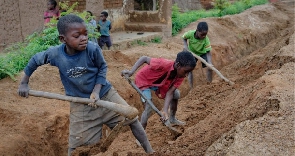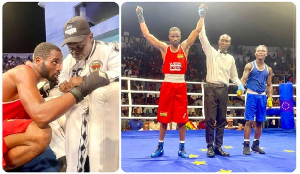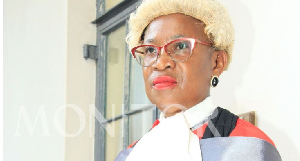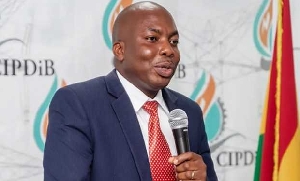Opinions of Thursday, 15 June 2023
Columnist: Yaw Oku-Ampofo Anakwah
Challenges in winning the fight against child labour; let us bridge the gap with intensive public education
From the year 2002 when the International Labour Organization launched the World Day Against Child Labour (WDACL), June 12 has always been earmarked to focus attention on the global extent of child labour and the action and efforts needed to eliminate it.
This year, Ghana commemorated WDACL with the theme; “Intensify Action Against Child Labour; Do it fast, do it now”.
This year’s WDACL event was held in a small rural community called Ntowkrom in the Ayensuano District of the Eastern Region. The strategic positioning of the community served as a nectar to draw nearby communities to the program most of who witnessed at first-hand, what the experts say about child labour. I doff my hat to the school children (our major stakeholders in the fight against child labour) for showing up in their numbers.
The event was graced with the presence of high-profile dignitaries from; UNICEF, World Bank, World Cocoa Foundation, International Cocoa Initiative (ICI), Japan International Cooperation Agency (JICA), Minerals Commission, WinRock International, Child Research for Action and Development Agency (CRADA) etc.
This year’s event was held against the backdrop of the problem of eliminating child labour which is still looming. No doubt, we are yet to cross the Rubicon- which is to meet the target to end child labour in all its forms by 2025.
The theme for this year is timely because it resonates like a war cry. “Intensify Action Against Child Labour; Do it fast, do it now”. This implies that the battle lines are drawn and all that is needed is a well-calculated strategy and precision to conquer the global enemy.
We need not look too far to strengthen our offensive capabilities that can liberate every Ghanaian from the captivity of not knowing more about child labour. The strategy which also gives us a tactical advantage is measured by the numerous information centres dotted across the country.
Regrettably, what we associate these information centres with is the loud at times disturbing airing of funeral announcements and the sale of local drugs which have taken over their usage.
Obviously, they can serve a very useful purpose in meeting the elimination of child labour objectives when it comes to extensive public education which inevitably, has to drive our approach.
For example, their operators could be contracted to play regular recordings of the basic concepts of child labour with catchphrases and slogans and I believe people’s attitudes will change after hearing the same message for the umpteenth time. I am personally, of the view that not much has been done in terms of public education on the issue which to me holds the key to eliminating child labour.
Aside information centres, electronic media particularly television and radio and other social media platforms can also be involved. Their publicity strength which lies in educating, informing and entertaining the public has to be mobilized in the crusade. From my last count, there are almost 200 local channels in Ghana. My estimation might not be accurate but the point is there
are lots of TV channels which can even make it easier to fight this particular ill of society once we adopt a common approach.
This should involve tapping sharp minds to create catchy and compelling content for our TV and radio programmes and by this, I believe the narratives on
child labour would no longer be ambiguous.
Essentially, children, our major stakeholders should also be involved deeply in this fight. Who knows, the creative solutions they can provide if we add the elimination of child labour to the curriculum taught in schools? This will also be a major factor in raising a generation who are abreast with child labour and its consequence to a nation.
The solidarity messages from partners delivered at the function pointed to the need to act differently and collaborate effectively to yield different results. But a statement by one of the speakers from ICI had an impression on me “To succeed in our fight, every single Ghanaian needs to have a common understanding of the basic concept of child labour” I believe this should be the first line of action.
Being part of the CRADA team, I was honoured to be present at this program where I could relate field experiences to what the Government of Ghana and Developing partners are collaborating to do to support and sustain the fight against child labour.
I wish to commend the Ministry of Employment and Labour Relations (MELR) and Child Labour Unit (CLU) for all the hard work they put into producing an updated and effective manual for tackling child labour in Ghana - “Ghana Accelerated Action against Child Labour”.
This is going to serve as a common guide for all stakeholders in tackling child labour. More so, I commend MELR and CLU for choosing the Ayensuano District as the venue for this year’s program. Child Labour is rife in the Eastern Region, especially in the cocoa growing areas, where children are used to working severely on farms, especially during the harvest season.
With what we have achieved as a country, Ghana stands a chance to raise the hopes of the world because we have made remarkable progress and what we are left to do is not beyond us.
It is essential to add that the school children’s contribution to the program was massive; cultural display, poem recitals, displaying placards with heartfelt messages and the drama which vividly explained the concept of Child Labour all contributed to the success of the program.
This could be the dress rehearsal of a national awareness creation program outdoored at the National Theatre, a project I’m planning to execute soon.
Our children are looking up to us. May it be said of us, that this is the generation that ended child labour.













